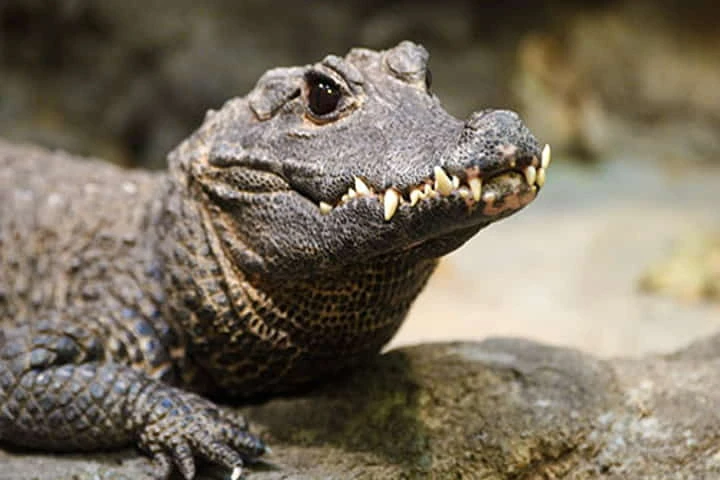Between 15 and 18 million years ago in parts of Africa there were two species of giant dwarf crocodile which may have been terror for the human beings at that time, according to a report in sciencealert.com.
It is not difficult to comprehend how frightening these two species must have been if one considers their size – measuring 12 feet in length — they were hostile and ferocious, not creatures one would like to meet face to face during the Early and Middle Miocene period.
What is indeed interesting about these animals is that though they dominated their fiefdom, they vanished from the face of the earth abruptly. This may have been due to instant changes in the environment they lived in.
These two new species have been christened as Kinyang mabokoensis and Kinyang tchernovi. While they may have shared the looks and appearance of the modern-day dwarf crocodiles, what set them apart was the fact that they were four times bigger.
Talking about them, Christopher Brochu, a palaeontologist from the University of Iowa said: “These were the biggest predators our ancestors faced. They were opportunistic predators, just as crocodiles are today. It would have been downright perilous for ancient humans to head down to the river for a drink."
As per the scientists the snouts of these animals were deep and short while they had conical and large teeth. Compared to the current day crocodiles whose nostrils are directly up, the nostrils of these ancient creatures faced more to the front.
The finding of many fragments of skull discovered from digs in the East African Rift Valley and their thorough investigation is what led the scientists to conclude that these were two new species. The researchers added that though these “very similar” yet they were different species of crocodiles.
These two species of crocodiles would have spent a large part of their day looking for food in the forests instead of waiting for them in the water. Their habitat then — what is now Kenya — had large forests.
It was the slow and gradual diminishing of the forest cover because of change in climate and less rains that led to the disappearance of these species, according to the scientists. The thick forest cover was replaced by mixed savanna woodlands and grasslands – an environment that did not suit them.
Elaborating on this Brochu said: "Modern dwarf crocodiles are found exclusively in forested wetlands. Loss of habitat may have prompted a major change in the crocodiles found in the area. These same environmental changes have been linked to the rise of the larger bipedal primates that gave rise to modern humans."
The theory suggested needs more study and research as it is not clear as when exactly did the Kinyang crocodiles go extinct. Further, the break in continuity in the fossil record between these giants and the present-day modern species has to be filled in.
More information needs to be gathered about these two species like for example how many teeth they had. New fossils which will be discovered in the future can be matched with these ones.
Details of the research was published in The Anatomical Record.




















